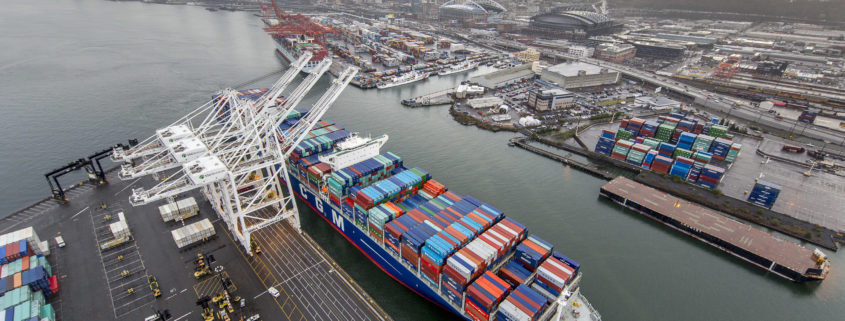Cost-share split sought for inland waterways work
By Chris Gillis for American Shipper
Inland waterways users want Capitol Hill lawmakers to modify the cost-share structure to finance infrastructure projects on the commercial river system to reflect the approach that now is used for deepening the nation’s harbors from 45 to 50 feet.
Currently, the cost-share structure for inland waterways infrastructure projects is 50% nonfederal funds and 50% federal funds. The 2016 Water Resources Development Act (WRDA) established a cost-share split of 25% nonfederal funds and 75% federal funds to support harbor deepening.
In the case of the inland waterways industry, the 25% nonfederal funds would be derived from the Inland Waterways Trust Fund (IWTF) for inland navigation projects. The IWTF is funded through the collection of a 29 cents-per-gallon diesel gas tax already paid by the inland waterways users.
The inland waterways industry wants Congress to make this change as it prepares the language in the 2020 Energy and Water Development and Related Agencies Appropriations Act.
“The inland waterways system has a portfolio of more than 15 high-priority inland navigation projects either under construction or awaiting construction. At the current rate, many of these projects will not even begin construction in the next 20 years,” testified Rob Innis, plant manager for LafargeHolcim (OTC: HCMLF) at Sparrows Point, Md., as a representative of the Waterways Council Inc. (WCI) before the House Water Resources and Environment Subcommittee on Wednesday.
According to Innis, LafargeHolcim, a global supplier of concrete and aggregates, relies on the U.S. inland waterways system to support 30 facilities. In 2018, the company transported 9.2 million tons material over the nation’s rivers.
“By conforming the cost share with the Inland Waterways Trust Fund to the same formula that was approved for deep-draft ports in WRDA 2016, this committee’s action would allow for the inland navigation capital program to remain operating at or above a $400 million level achieved since the cost-share change at Olmsted and accelerate project delivery on that portfolio of critical inland waterways projects,” said Innis, who also serves as a member of the Inland Waterways Users Board. A special provision in the 2014 Water Resources Reform and Development Act (WRRDA) allowed for a one-off cost share of a 25% IWTF-75% federal funding split over the last six years to speed up the Olmsted Locks and Dam revitalization program. The Inland Waterways Users Board noted to Congress in May that this allowed for an estimated $600 million in economic benefit to be already achieved for the nation.
“With this cost-sharing change, there will be sufficient funds in the IWTF to continue full and efficient funding for the ongoing inland waterways projects already under construction and to allow consideration of additional important and time-sensitive projects,” the Inland Waterways User Board wrote in a letter to the leadership of both the House and Senate on May 10.







Leave a Reply
Want to join the discussion?Feel free to contribute!